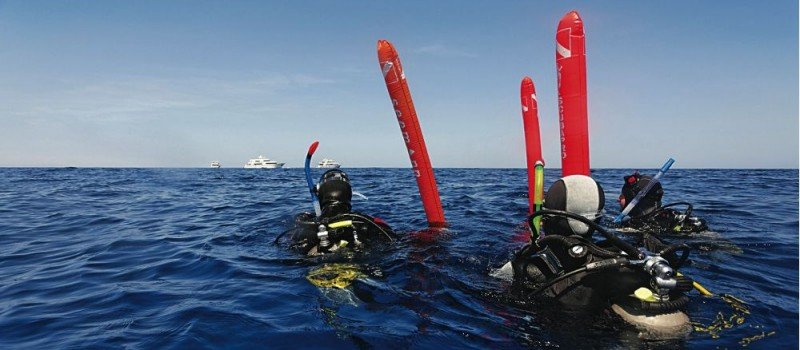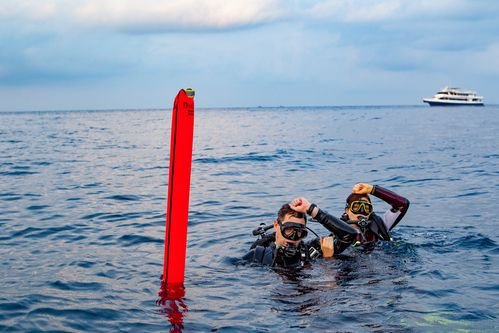The Importance of Having a DSMB for Scuba Diving
Scuba diving is a thrilling experience that allows you to explore the wonders of the underwater world. However, ensuring your safety should always be a top priority. A crucial tool for scuba divers is the Delayed Surface Marker Buoy (DSMB).
The Importance of a DSMB: Safety and Communication
Safety in Diving with a DSMB: Having a DSMB is essential for the safety of scuba divers, especially in areas with heavy boat traffic or strong currents. Not only does it enhance your visibility to surface crews, but it also serves as a crucial communication tool between you and the surface team. By deploying the DSMB at the end of a dive, it acts as a signal to the surface team, indicating your location and ensuring that you are visible and accounted for.
Communication with a DSMB: The DSMB serves as an effective communication tool between divers and the surface team. Different deployments of the DSMB can indicate different messages, such as distress, the need for assistance, or simply marking your presence. Understanding and utilizing these different deployments and signals is crucial for effective communication underwater.
Differentiating Between Types of SMBs
SMB: The basic Surface Marker Buoy (SMB), is a simple inflatable that can be deployed at the surface to signal your location. While it serves as a basic safety tool, it lacks the versatility of a DSMB and can only be deployed once you have already surfaced. Sometimes divers use SMB to constantly demark their location for surface crew by pulling it along while diving
DSMB: The Delayed Surface Marker Buoy (DSMB) offers enhanced functionality compared to the basic SMB. It can be deployed underwater and ascends to the surface, reliably marking your position and providing better visibility. There’s different types of DSMB
The Closed-ended DSMB: A closed-ended Delayed Surface Marker Buoy (DSMB) is a sealed tube or bag with a one-way valve at the bottom. This valve allows air to be added, usually from a diver's alternate air source, but prevents air from escaping. This design keeps the DSMB fully inflated and upright in the water, maximizing its visibility at the surface.
The Open-ended DSMB: An open-ended DSMB is essentially a tube or bag with an opening at the bottom and a sealed top. Air is added through the bottom opening, and excess air can escape from the top. This design makes it easier to inflate and deflate the DSMB.
The Self-Sealing DSMB: In challenging dive conditions or for advanced divers, the self-sealing SMB is an excellent choice. This type of SMB automatically seals when it hits the surface, preventing water from entering and causing deflation.
Choosing the Right SMB for Your Needs… And Size Matters
The choice of SMB depends on your diving conditions and personal preferences. The standard DMSB size is the 1.8m in length. Beginners may prefer the simplicity of the basic SMB, while more experienced divers often opt for the functionality and reliability of a DSMB or self-sealing SMB. The Dive Company carry specific DSMB in the shop for versatility and ease of use. Do check it out in our shop!
DSMB Specialty Course with The Dive Company
To fully grasp the importance of a DSMB and become proficient in its use, The Dive Company offers a DSMB specialty diver course. This course is designed to provide divers with the necessary skills and knowledge to effectively deploy and utilize a DSMB during their dives. The hands-on training and expert guidance from The Dive Company's instructors will enhance your safety, confidence, and overall diving experience.
In Conclusion: Dive with Assurance
Scuba diving is a thrilling adventure, but safety should always be a top priority. Utilizing a DSMB and understanding the differences between various types of Surface Marker Buoys (SMBs) can greatly enhance your safety underwater. So, why wait? Delve deeper into the world of scuba diving today with The Dive Company and equip yourself with the skills to dive with assurance!



